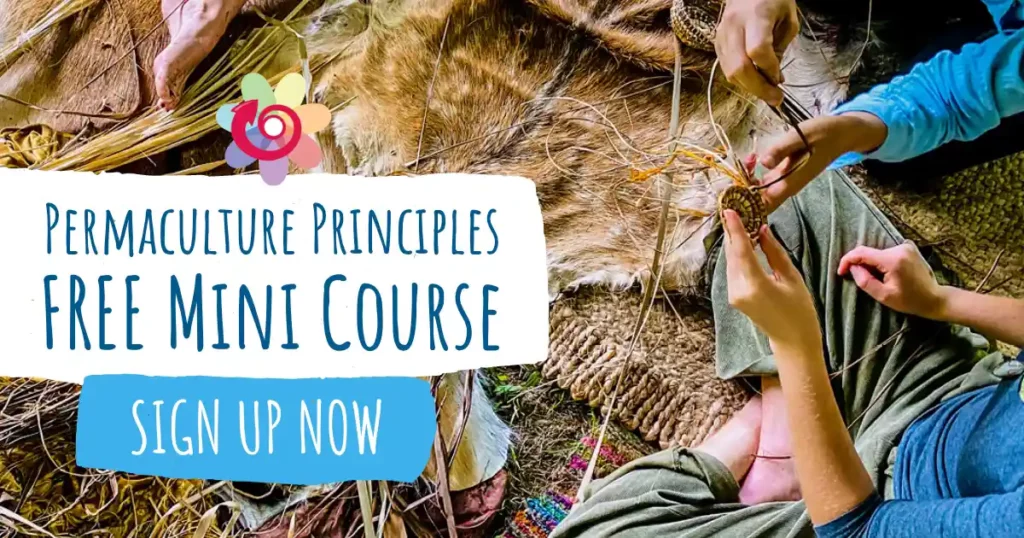"Beauty is in the eye
of the beholder"
By taking the time to engage with nature we can design solutions that suit our particular situation.
This icon for this design principle represents a person ‘becoming’ a tree. In observing nature it is important to take different perspectives to help understand what is going on with the various elements in the system. The proverb “Beauty is in the eye of the beholder” reminds us that we place our own values on what we observe, yet in nature, there is no right or wrong, only different.
Check out more awesome stuff from Charlie Mgee and Formidable Vegetable
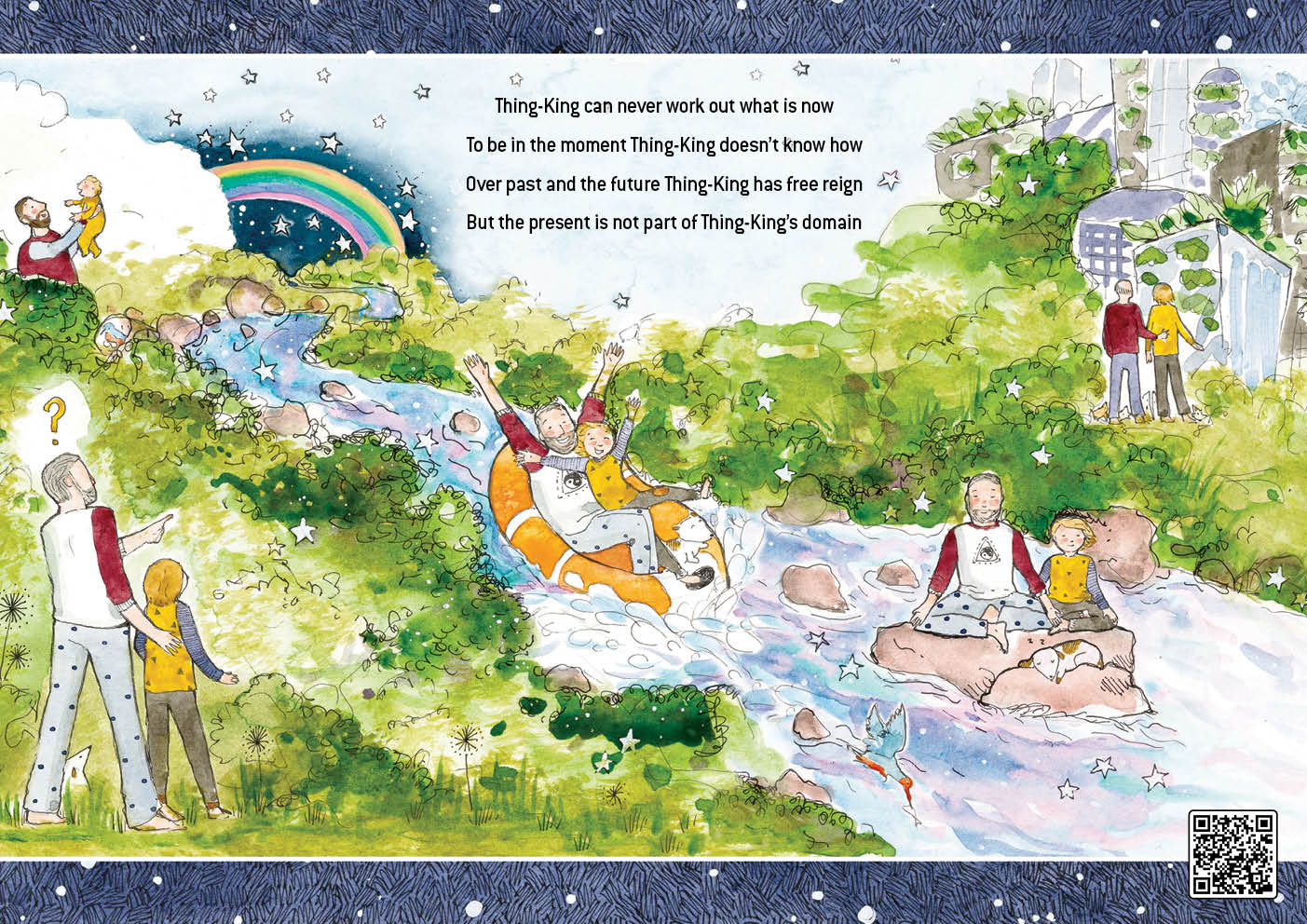
Being in the moment
In the storybook Bing & Bang Begin, author Marc Cohen, and illustrator Kia Maddock, highlight how outdoor adventure, play and special moments of togetherness can engage all the senses and big heart-felt feelings. Kinaesthetic learning happens naturally at these times. Mac, aged 11, “liked how Thing-King can only be in the past and the future”.
Illustration from Bing & Bang Begin (2020) by Marc Cohen & Kia Maddock
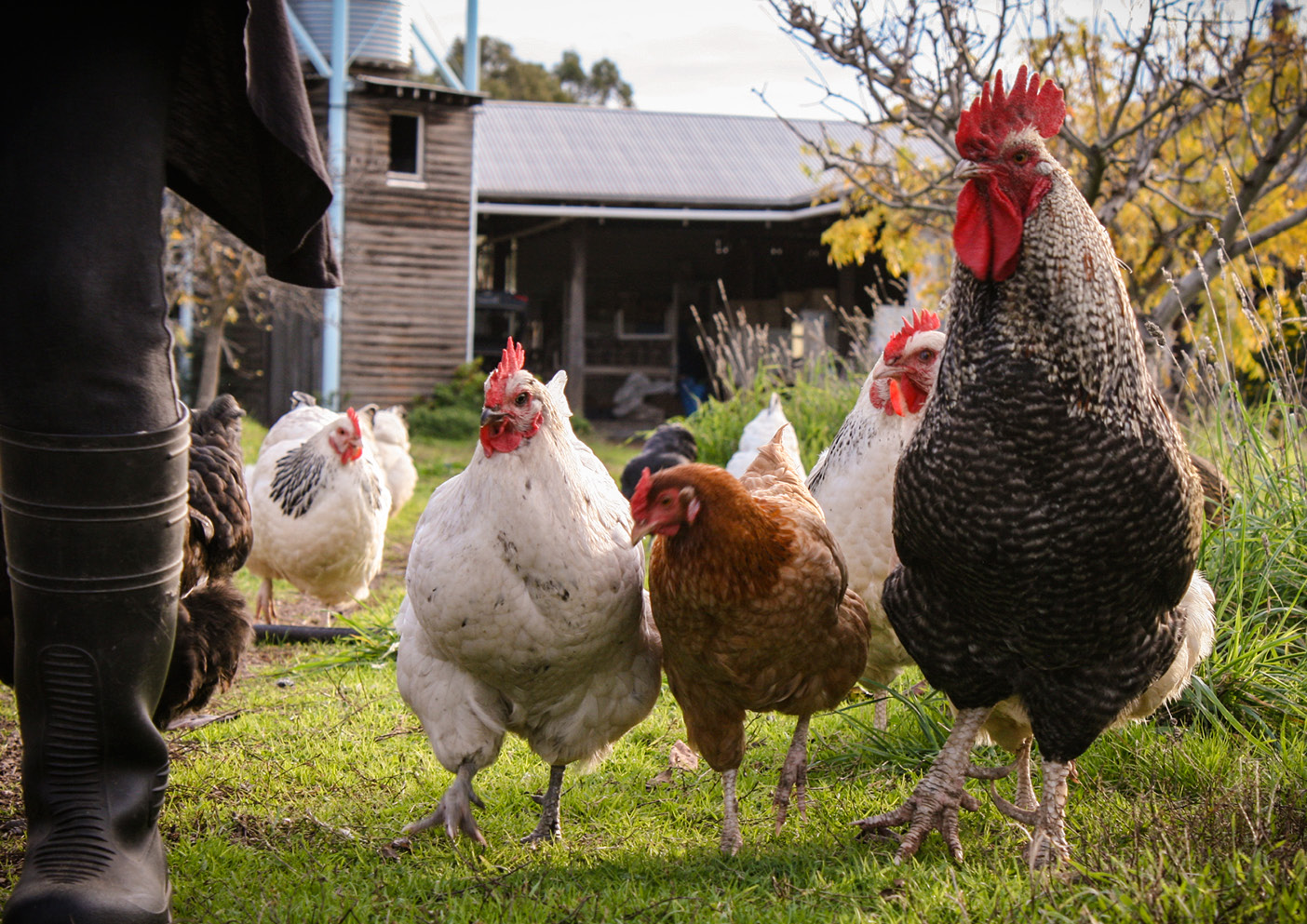
The evening parade
This rooster (Sir William) rocks his role on the farm, we love what he brings to his job. He tries to keep the flock together for safety, is protective, calls the hens to good sources of food, and he lets the hens feed first – or responds well to being reminded if he forgets to do that. He relates well to us, works with us to lead the hens in for the night, and ushers them into the pen.
Photo by David Arnold, Murrnong Permaculture on Taungurung Country, Violet Town, Victoria, Australia.
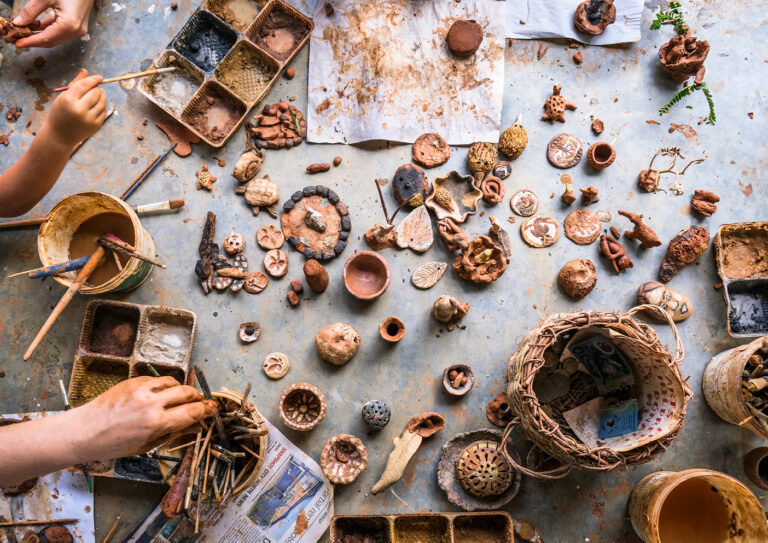
Hands and minds moulding the future
Bob Mud runs the Earth Arts stall at Northey St City Farm, using locally sourced earth based materials combined with recycled materials. People of any age are free to join in with monetary donations optional. Bob says ‘No lessons, no training, not directed, just do – others join in.’ Improvisation, exploring with curiosity, and free play (self-directed learning) have been neglected parts of education in our modern school based societies.
Photo taken by Richard Telford at Northey Street City Farm, Windsor, Queensland, Australia.
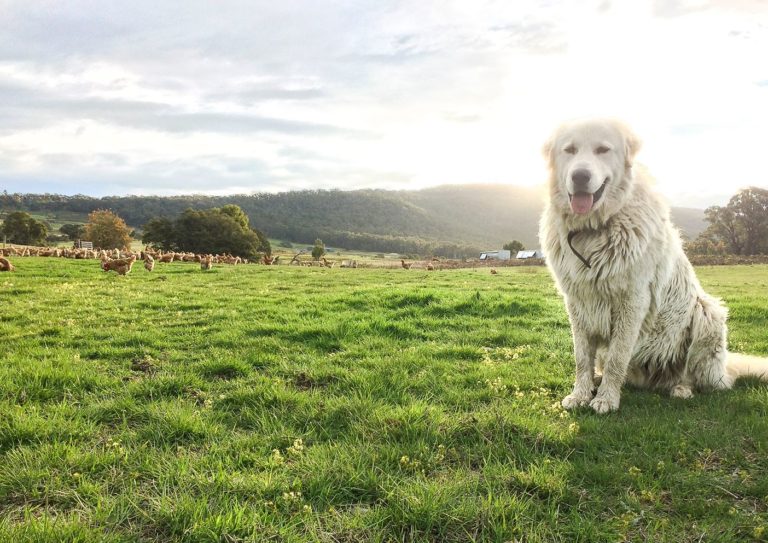
Guardian of the flock
Shanti and four alpacas protect these pastured laying hens from foxes and wedge-tailed eagles. Shepherd dog breeds such as Maremma are the result of thousands of years of working relationships with human shepherds. Alex and Kali (humans) can move the chickens for fresh pasture and regeneration, without protective fencing. Strong beneficial relationships between species become possible when we take the time to deeply observe and interact.
Photo taken by Alejandro Corona at Abundance Farm - in Raglan, Victoria, Australia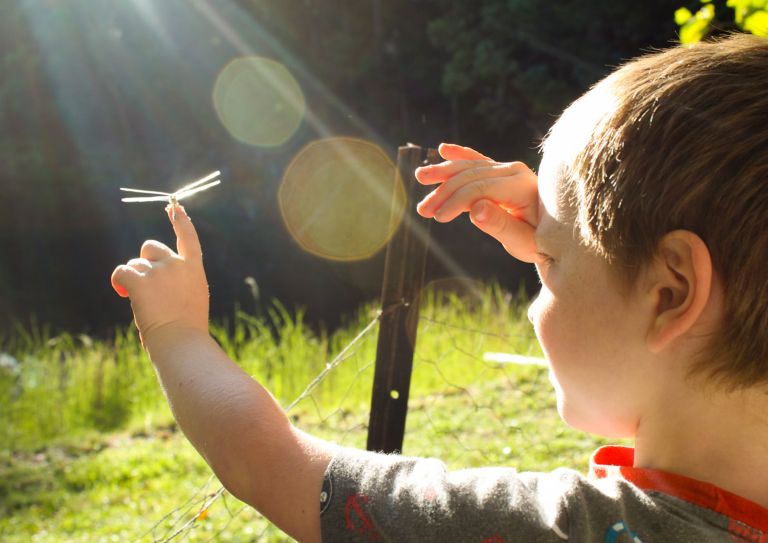
The wonder of transformation
“On this morning, while 5 year old Torsten was out feeding the animals before school, he noticed a dragonfly nymph on a grass stalk by the pond. He gently put his finger in front of it and it climbed on. Mesmerised, he watched as the wings unfolded and dried. When they began to vibrate he held his hand up and, in its own time, the dragonfly flew off. He showed sensitivity and considered self control to engage with this beautiful metamorphosis without hindering the process.” – Sandi
Photo taken by Sandi Pointner at Eagle Ridge Permaculture - NSW Central Coast, Australia
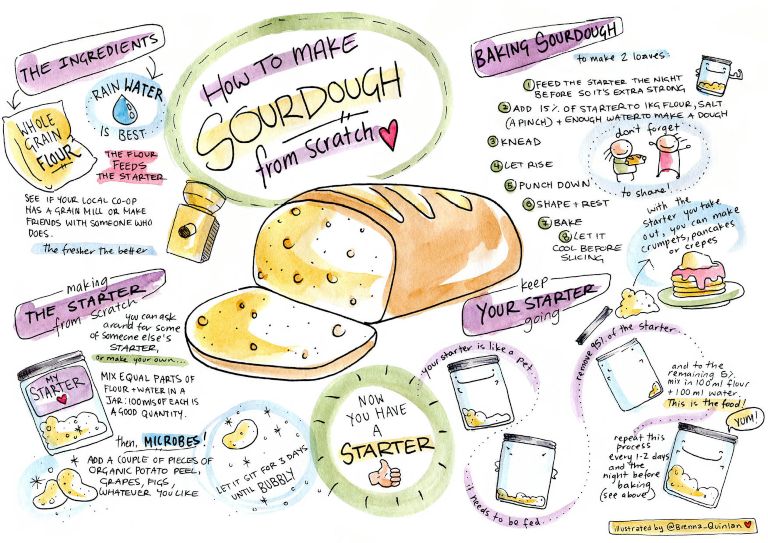
Watching the fermentation process
When you make your own bread, you know exactly what it’s made from, even your own wild yeast. As the microbes in the starter culture feed, they break down the phytic acid, releasing micronutrients and making the bread easier to digest. How long this process takes depends on many different factors; from how active the starter was, the freshness and quality of the flour, to the ambient temperature. Timing is key in sourdough making, so watch carefully to ensure a great result.
Illustration by Brenna Quinlan
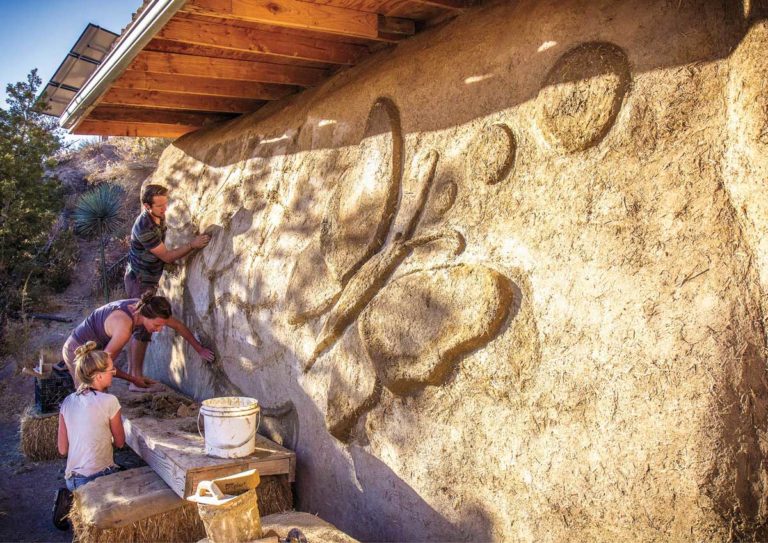
Working together with earth
What was once a shipping container is now a cob cool store, in the process of being decorated with an earth render. The characteristics of the natural materials used in the cob; clay sediment, water, sand and fibers, are unique to every location. Choosing appropriate materials, creating the right mix and fixing the medium to different surfaces requires good technique, experimentation and practice. Working alongside people with expertise is an effective way to gain skills.
Photo taken by Ryan Spaulding at Quail Springs Permaculture – Cuyama Valley, California, United States.
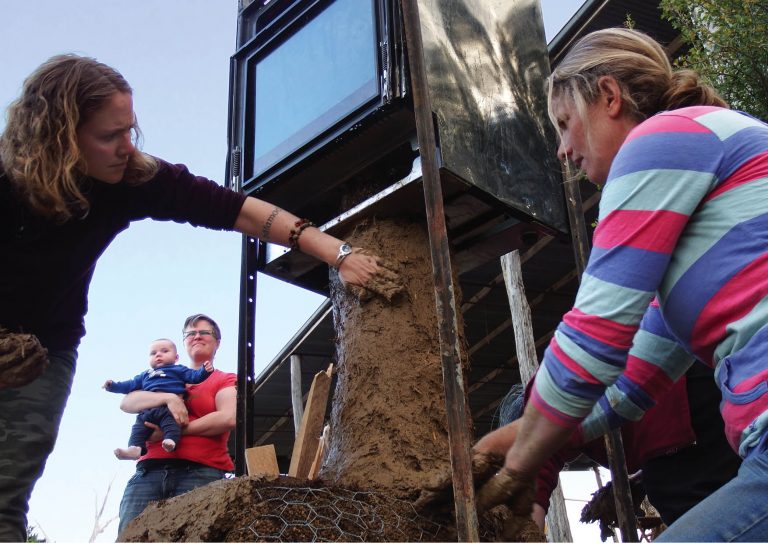
An old gas oven gets rocket powered
This low-tech workshop began by explaining the fundamentals of how a rocket stove works to illustrate how this super efficient ‘engine’ can be adapted to a multitude of uses. A number of examples were demonstrated before commencing with this unusual upcycling project, using many materials found laying around the farm. With the knowledge and hands-on experience gained, attendees are now able to apply their own ingenuity to other rocket stove powered constructions.
Photo contributed by Richard Telford.
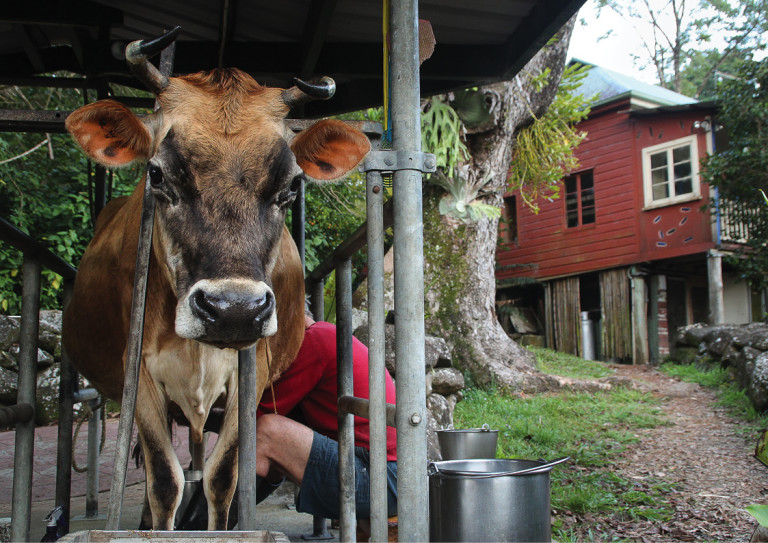
Connecting to the source of nourishment
Dharmananda community has a small herd of well loved cattle, several of which are producing milk at any one time. The herder monitors the health, well-being and feeding of the cows through the course of daily tasks. Over time that person gets to know each of the cows by name, how old they are and how they are related. By keeping closely connected, the herder builds trust and both cows and people gain a sense of well-being from those relationships.
Photo contributed by Helen iles.
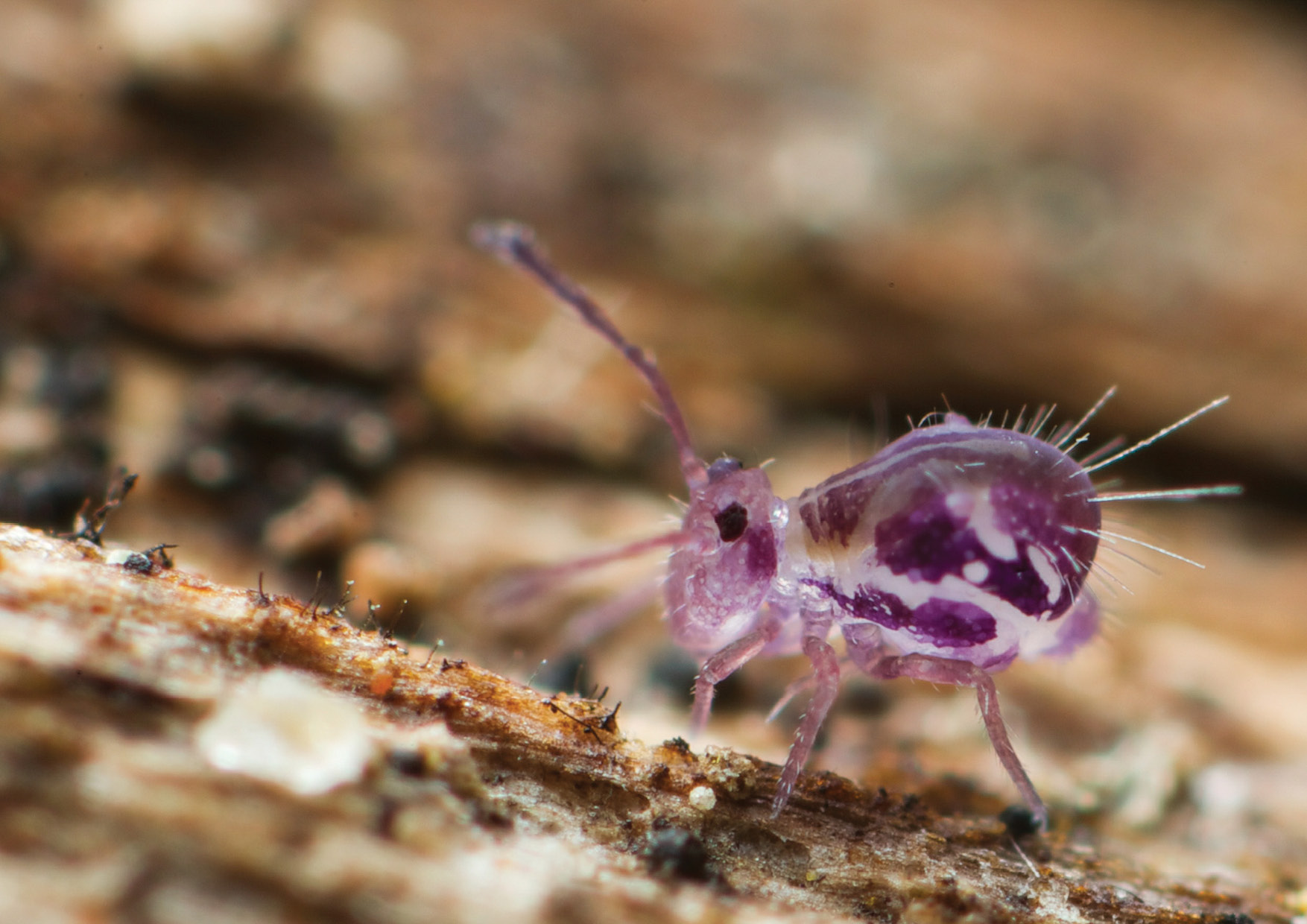
Discovering Springtails
Once classified as an insect, springtails like this Dicyrtomina sp. are one of the most abundant macroscopic animals. They play an important role in spreading spores to help establish plant-fungal symbioses and in controlling fungal disease. Because of their sensitivity to pollution they are used by scientists to determine soil health. Though difficult to see, you can find the six legged critters, often less than 2mm in size, on the underside of damp wood using a magnifying glass.
Photo contributed by Andy Murray.
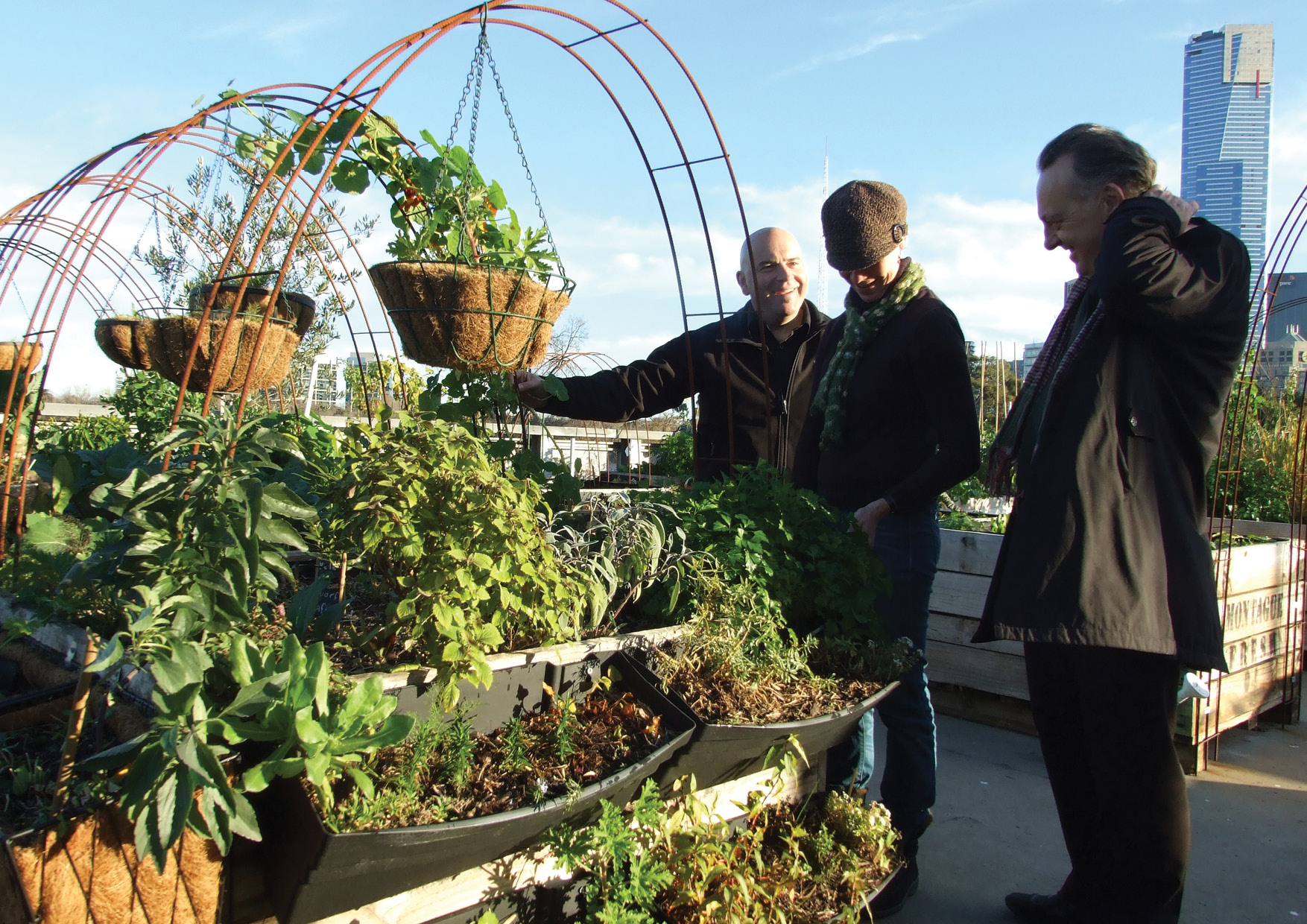
Bringing the concrete jungle to life
Pop up Patch in the heart of Melbourne shows what’s possible on a rooftop. Soil placed in reused fruit crates provides growing space for Lisa and Roy (right), who don’t have access to land. On site tools, books, seeds and guidance give them all they need to produce fresh food near where they live and work. The process of gardening reconnects them to the seasonal harvest, the cycles of nature and their community – bringing vibrancy and activity to the city skyline.
Photo and accompanying text contributed by Richard Telford
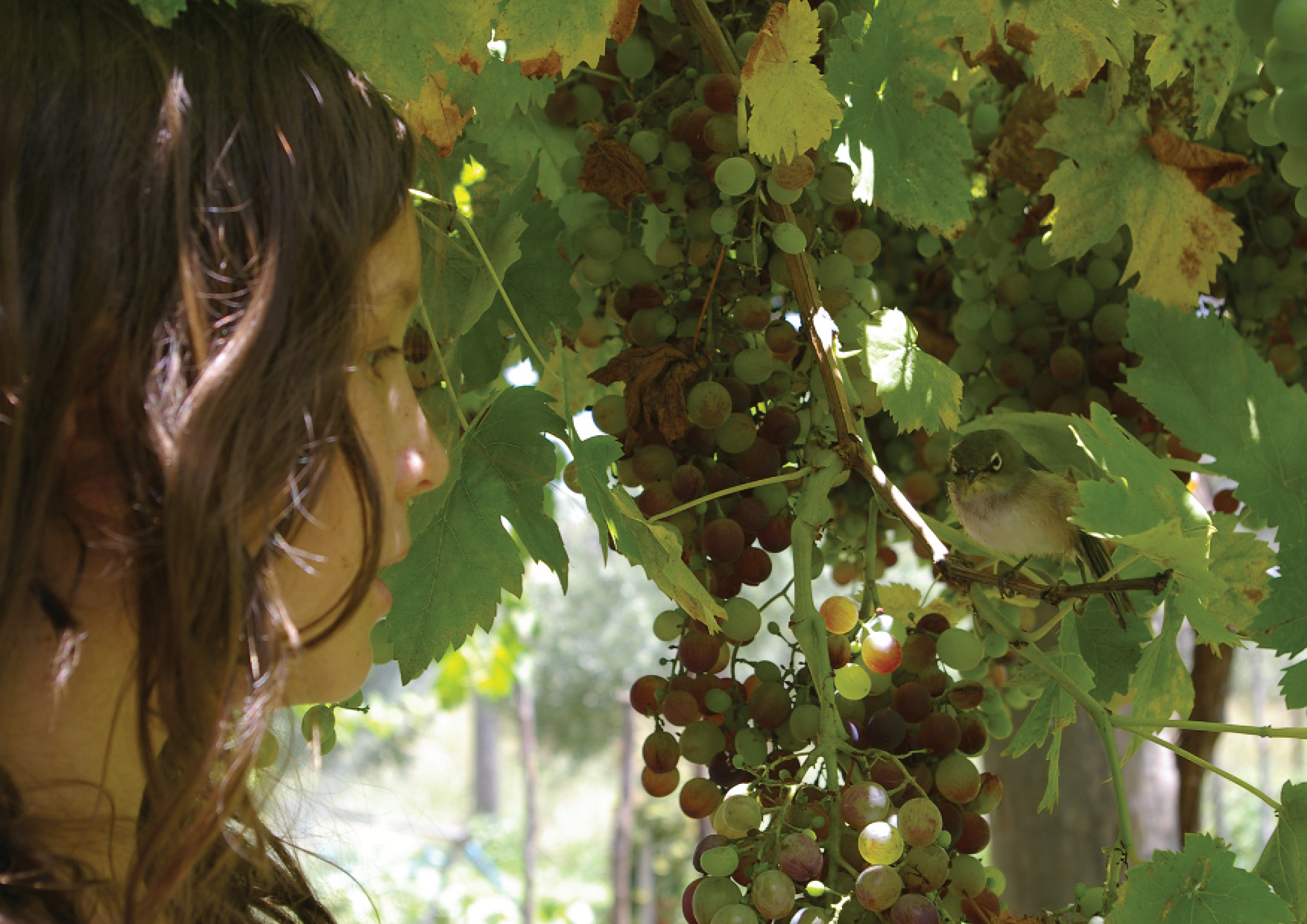
Class-free room
Grace is caring for a little bird that was stunned after flying into a window. Here under the shade of the grape pergola is an opportunity to care for and play with a wild creature. Each year we prune these vines and train them to the pergola wires. We watch them grow and extend their summer shade over the sun facing windows, and we keep an eye on the developing grape harvest.
Photo and accompanying text contributed by David Arnold
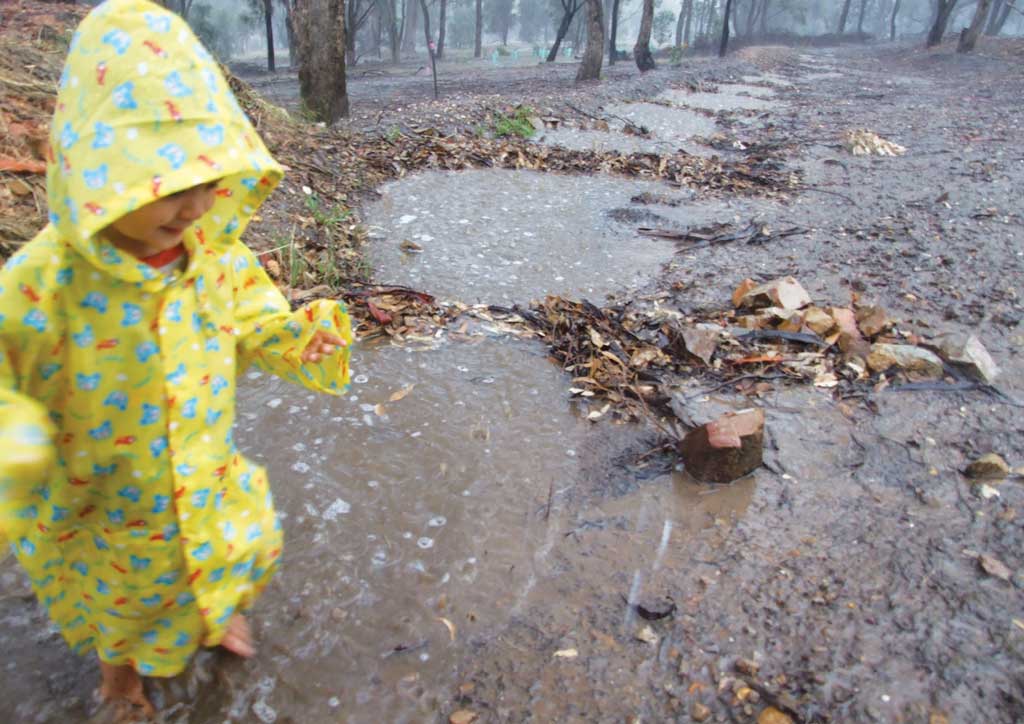
Feel it
Kai, 2½, is delighting in a rare summer storm while his father observes erosion control measures. The chains of ponds observed in some stable streams have been replicated here. Rocks have been laid across this diversion channel to slow the flow and catch sediment, and branches laid across the staggered outflow to spread it across the grassed gentle slope in the background. Kai is playing, and learning without trying.
Photo contributed by Richard Telford
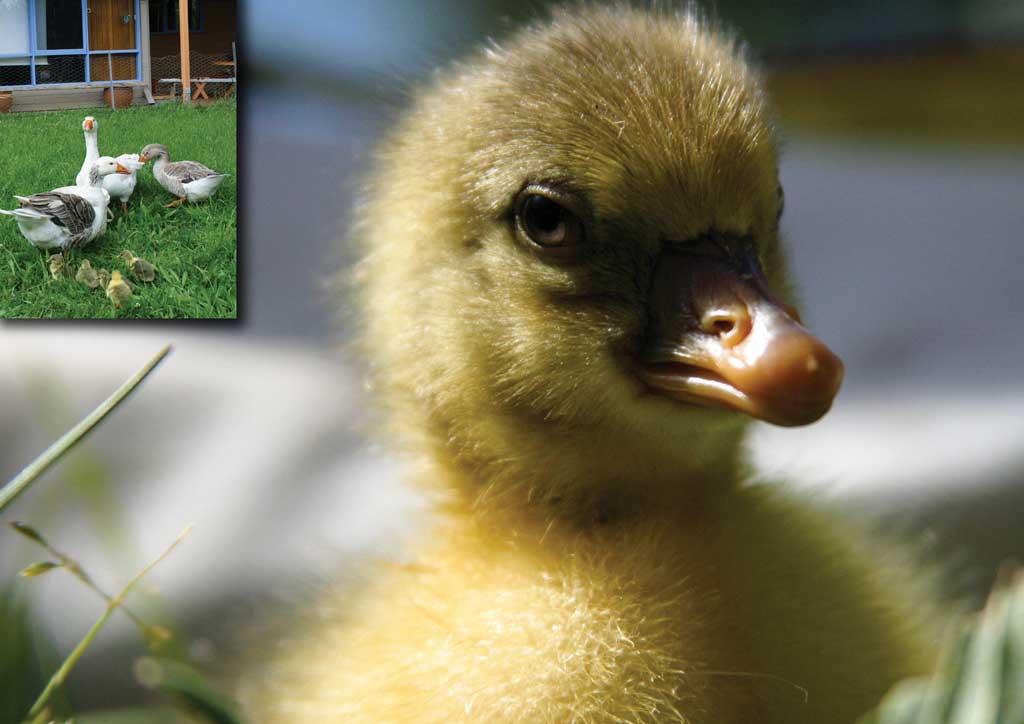
Goslings with geese, watching and being watched
Social animals survive and thrive by observing and interacting with each other and their environment. By penning geese with newborn goslings on the lawn in front of the home office we can understand their behaviour and hear any alert calls warning of predators.
Photo and accompanying text contributed by David Holmgren
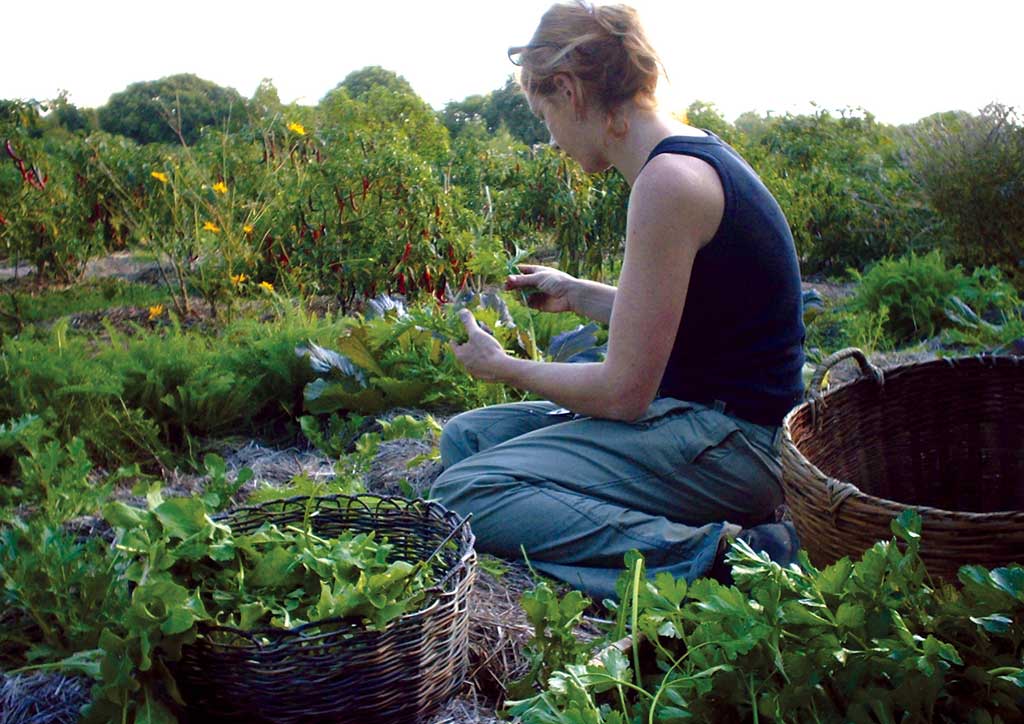
Northey Street City Farm, a haven amongst concrete
Clare finds a quiet space as she harvests salad for a shared community meal. This is also a time for observation and reflection. Clare helped develop an organic market garden at Northey Street City Farm. Observation and learning from the world around us are really only truly valuable if they “reconnect us to the wonder and mystery of life through practical interaction.” [David Holmgren]
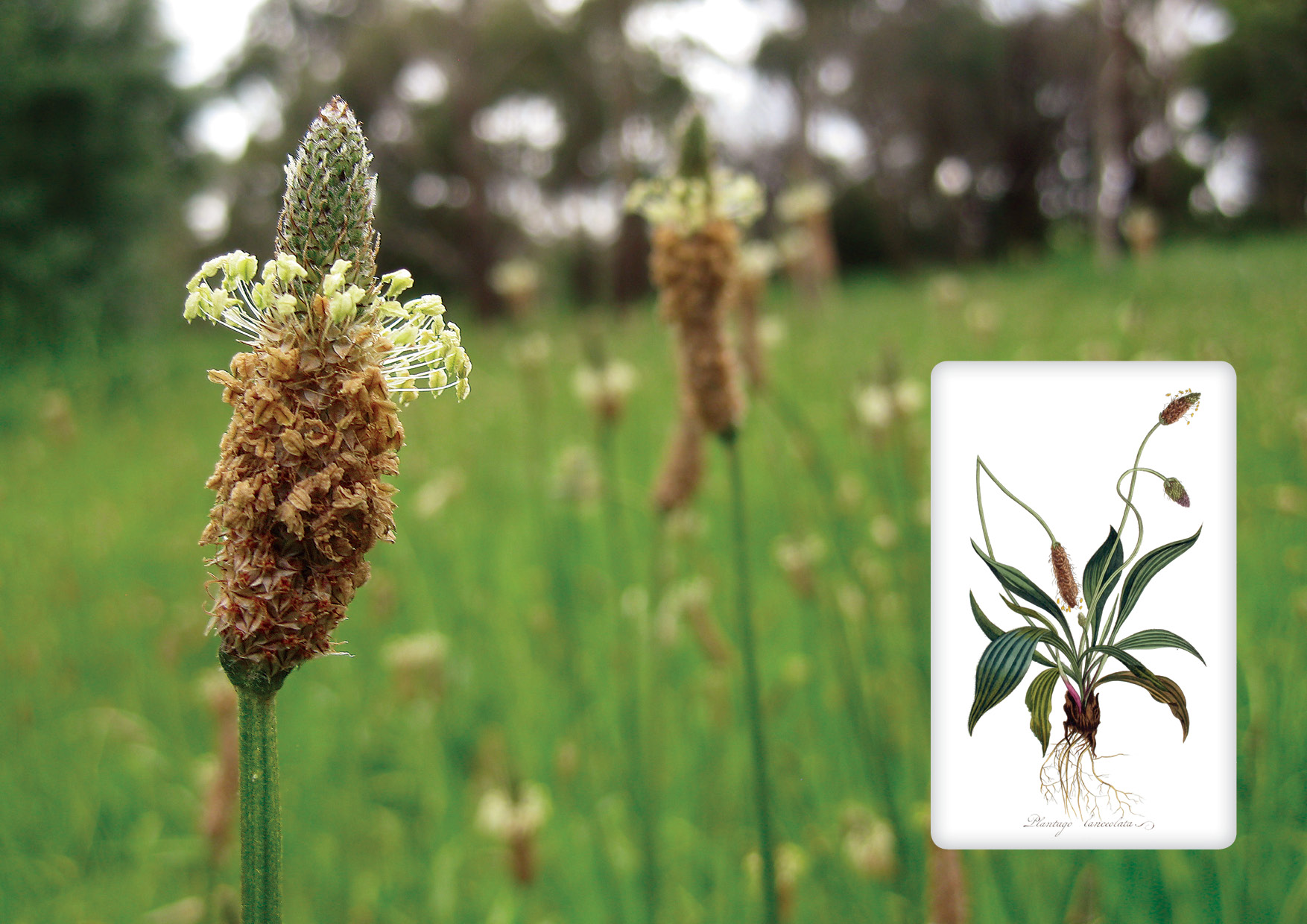
Weed or medicinal herb?
Consider a plant with leaves that, when used as a poultice, has the ability to radically speed up wound healing. When eaten they boost the immune system, while the seed heads produce the digestive aid psyllium husk. Where could we find such a remarkable plant? Often within metres of the back door. It is plantain, a plant we usually dismiss as a ‘weed’. However in Norway it’s known as groblad, and in the Isle of Man as slan lus, both translating as ‘healing herb’.
Photo and accompanying text contributed by Adam Grubb. See The Weed Forager’s Handbook for more.




